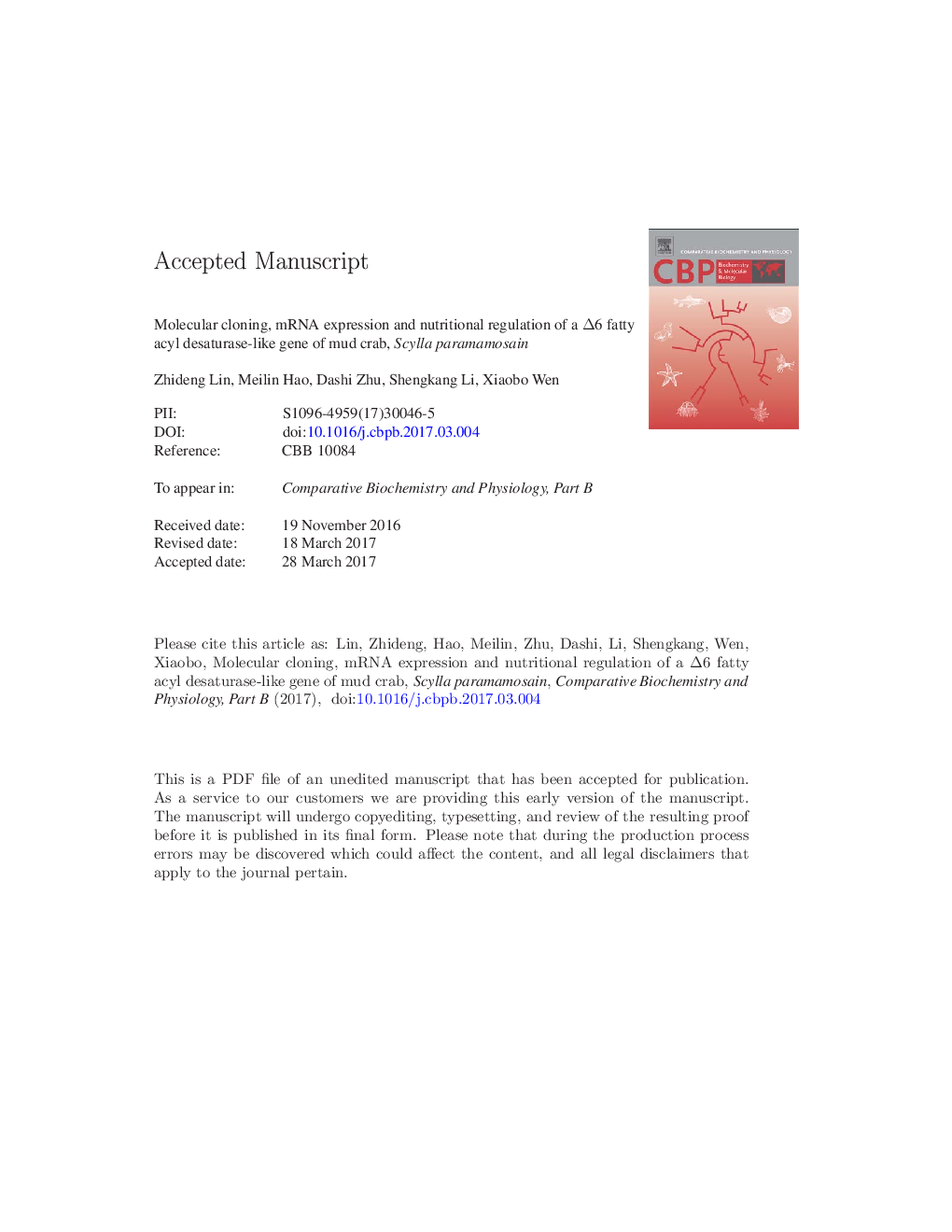| Article ID | Journal | Published Year | Pages | File Type |
|---|---|---|---|---|
| 5510458 | Comparative Biochemistry and Physiology Part B: Biochemistry and Molecular Biology | 2017 | 27 Pages |
Abstract
Fatty acyl desaturases (Fads) are critical enzymes in the pathways for the biosynthesis of the highly unsaturated fatty acids (HUFA). Here we report on the molecular cloning, tissue expression and nutritional regulation of a Î6 fatty acyl desaturase-like (Î6 Fad-like) gene from mud crab, Scylla paramamosain. The full-length cDNA was 1973Â bp, with a 201Â bp of 5â²-UTR, a 443Â bp of 3â²-UTR, and an ORF of 1329Â bp that encoded a protein of 442 amino acids. Bioinformatics analysis showed that the deduced peptide sequence possessed the typical features of the microsomal Fads, including N-terminal cytochrome b5 domain containing the heme-binding motif (H-P-G-G), three histidine-rich boxes and three membrane-spanning regions. Sequence comparison revealed that the predicted protein had a high percentage identity (>Â 53%) with Î6 Fads from other crustacean species. The tissue distribution of mud crab Î6 Fad-like mRNA was found predominantly in hepatopancreas, with lower expression levels in all other tissues. Quantitative real-time PCR showed that the Î6 Fad-like transcriptional levels in hepatopancreas gradually increased with the increased replacement of dietary fish oil (FO) by soybean oil (SO). The replacement ratio of FO by SO up to 60%, 80%, and 100% were significantly up-regulated by about 2.40-fold, 2.99-fold and 3.02-fold compared with that in the control group (100% FO) respectively (PÂ <Â 0.05). These results may contribute to better understanding the HUFA biosynthetic pathway and regulation mechanism in this species.
Related Topics
Life Sciences
Biochemistry, Genetics and Molecular Biology
Biochemistry
Authors
Zhideng Lin, Meilin Hao, Dashi Zhu, Shengkang Li, Xiaobo Wen,
